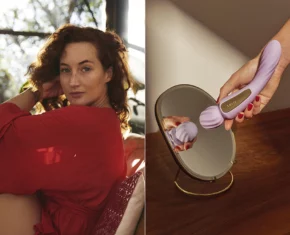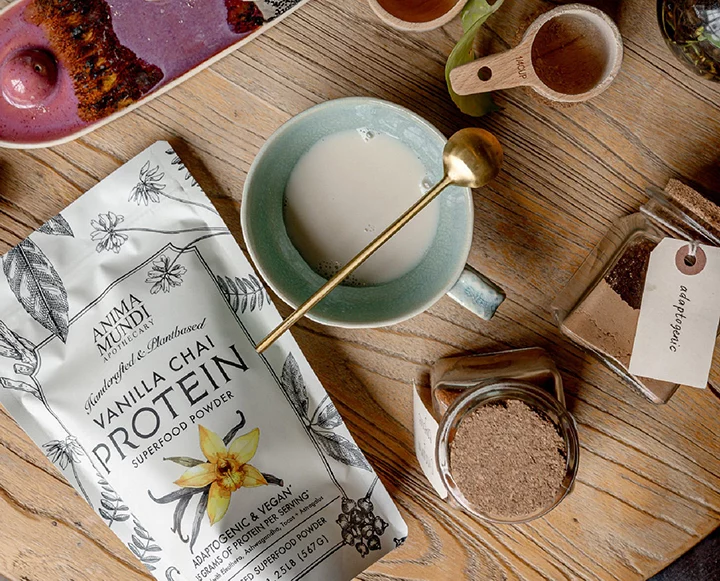We won’t sugarcoat it. Sugar is one of the most addictive substances out there – as addictive (if not more so) than drugs such as cocaine and morphine. In fact, our brain reacts quite similarly when we consume it, which can wreck havoc on our overall health, not just our waistlines.
It’s no wonder the world has a growing health epidemic on its hands; as a nation, we are heavier than we have ever been, and we are being diagnosed with chronic illnesses such as Type II Diabetes, heart disease and mood disorders earlier and earlier in our lives. From excess fat, increased cravings for sugar and carbohydrates, high blood sugar and high blood pressure, and diabetes, to mood disorders, brain fog and energy issues, sugar could be at the root of our problem.
The sheer amount of sugar in our daily diets is certainly one of the main culprits. From sweets to sodas, and even many savory foods, we consume nearly 140 pounds of sugar a year – individually. While, of course, 10,000 years ago they didn’t have access to the same sugar extracts we do today, our ancestors consumed a mere 20 teaspoons of sugar a year! That’s just 3 grams more than the sugar content in one 20-ounce soda!
While sugar consumption is one of the toughest food habits to break, reducing our sugar intake is one of the best changes we can make to impact our overall health. Whether you decide to take it slow and make a couple of small changes to your diet or decide to go full throttle and cut sugar out altogether, cold turkey, we’ve rounded up our best tips to help reduce sugar intake, one step at a time.
11 Tips for How to Reduce Sugar
Cut back on the number
According to the American Heart Association, women should consume no more than 25 grams of added sugar a day, and men mo more than 36 grams. When we begin to break down daily food products and think about the sugar content in a typical soda or cereal, we realize this is no easy task.
In order to reduce our intake, a little detective work and a whole lot of nutrition label reading is required. A good rule of thumb is not to buy products whose sugar serving size is greater than 9 grams. You’ll be surprised to see how many products this cuts out immediately.
Read ingredients, not labels
We’re all about balance at The Chalkboard Mag. For many of us this includes indulging that sweet tooth every now and then as long as we are aware of truly toxic ingredients, like high fructose corn syrup or artificial products, and steer clear of them entirely. If we are going to indulge, we’re going to make it worth it. Today there are endless food products that meet our extremely high expectations for the purest ingredients.
Don’t let pretty packaging and phrases like “natural” or even “organic” fool you. Be sure to flip over the package and read the ingredient list word-for-word. If items like high fructose corn syrup, corn solids or glucose are listed, pick something else. If sugar is simply listed you can be pretty confident this means table sugar or white sugar, which is also highly processed. For a complete list of 61 different names of sugar, check out this source.
Opt for the least processed sugars
If you aren’t willing to ditch sugar entirely but still want to make a change, make a swap for the more natural and pure sources of sugar such as dates or yacón and coconut sugar. These are less processed and still contain some vitamins minerals. In the case of dates, there is also fiber that helps to slow the absorption of sugar into the bloodstream. Check out our favorite sugar alternative picks here.
Don’t drink your sugars
You’re sweet enough already. If you want to significantly cut back on your sugar intake, beverages are one of the most obvious sources. From processed fruit juices, sports drinks, sodas, coffee drinks and even alcoholic beverages – these sources provide little to no nutritional value, and empty calories that don’t do anything to sate your appetite. Instead, these drinks create a vicious cycle of cravings, spiking an insulin rush, followed by a crash and repeated cravings. When you’re thirsty, opt for a beverage we can all use more of – pure H2O.
Avoid calorie-free products
If something is advertised as “calorie-free”, it is probably too good to be true. If nutritional facts list 0g of sugar per serving or contains a * next to it, beware. Companies are allowed to round down to 0 if their product contains 1 gram or less per serving. Nevertheless, a gram of high fructose corn sugar is still high fructose corn sugar, so be sure to read your ingredient labels carefully.
Steer clear of fat-free products
The same goes for advertized “reduced-fat” or “fat-free” items. Products that are low-fat, reduced-fat or fat-free are almost always full of sugar. Fat tastes good and the reduction or removal of this nutrient means the food industry needs to swap in another ingredient so it still tastes good. A perfect example of this is fat-free frozen yogurt, which is usually loaded with high fructose corn syrup. Not only is this sugar horrible for our health, it easily converts to fat. Moral of the story: opt for whole food ingredients rather than diet foods.
Use real cream, not milk
One cup of milk contains an average of 12 grams, or 3 teaspoons of sugar in the form of lactose. Once the fat is separated from milk, skim milk, for example, is essentially composed of sugar and water. In addition, most packaged dairy-free milk substitutes are loaded with added sugar. In the end, your best choice is to use whole real cream or homemade almond, coconut, hemp or other nut milk. Get our recipe for homemade hemp milk here.
Remove hidden sugar sources
Yes, they are hiding in everything from flavored waters to breads to savory items and condiments. The only way around these hidden sources are to read your ingredient and nutrients labels carefully or make these items from scratch so you know exactly what goes into them.
While not technically a sugar, flours and processed carbohydrates will elevate your insulin levels as much if not more than table sugar. If it’s your goal to cut out all forms of sugar, opt for slow carbohydrates like whole grains rather than flours, or even nut-based flours, which will keep insulin levels more stable and prevent cravings as well.
Retrain your tastebuds
If you’ve already greatly reduced your sugar intake and do find yourself craving something sweet, rather than ditching your good intentions when these cravings strike opt for something inline with your new lifestyle choices. Once you’ve removed many of the likely sugary suspects from your diet completely, your tastebuds will likely become more sensitive to even the subtle sweetness inherent in natural fruits and vegetables. Loaded with antioxidants, vitamins and fiber, fresh fruits and even sweeter vegetables like carrots, beets and winter squash make the perfect naturally sweet substitute.
Reduce Stress
Reduce stress levels, balance hormones and get more sleep to reduce cravings for sugar. That’s right, a healthier, happier and rested you won’t have the same cravings for comfort foods like sweets and carbs as your stressed out, imbalanced self. Start by making it a habit to schedule daily meals and healthy snack foods you can grab when you do have an emotional craving. Begin to retrain your reactions when cravings strike to understand if you are truly craving that tub of ice cream (unlikely), or rather if there is an underlying emotional connection.
Cold turkey
Ok, you’ve decided to go the whole nine yards and cut out all forms of sugar, cold turkey. While this may be the most challenging way to reduce your sugar intake, it is certainly the most beneficial. Be prepared for detox symptoms similar to skipping your morning coffee, or similar to what you might experience on a juice cleanse. Sugar is incredibly addictive so expect to have withdrawn symptoms for a couple of days. Be patient with yourself and keep in mind that it takes an average of 14 days to create a new habit, so push through and stick with it if going completely sugar-free is your end goal.













